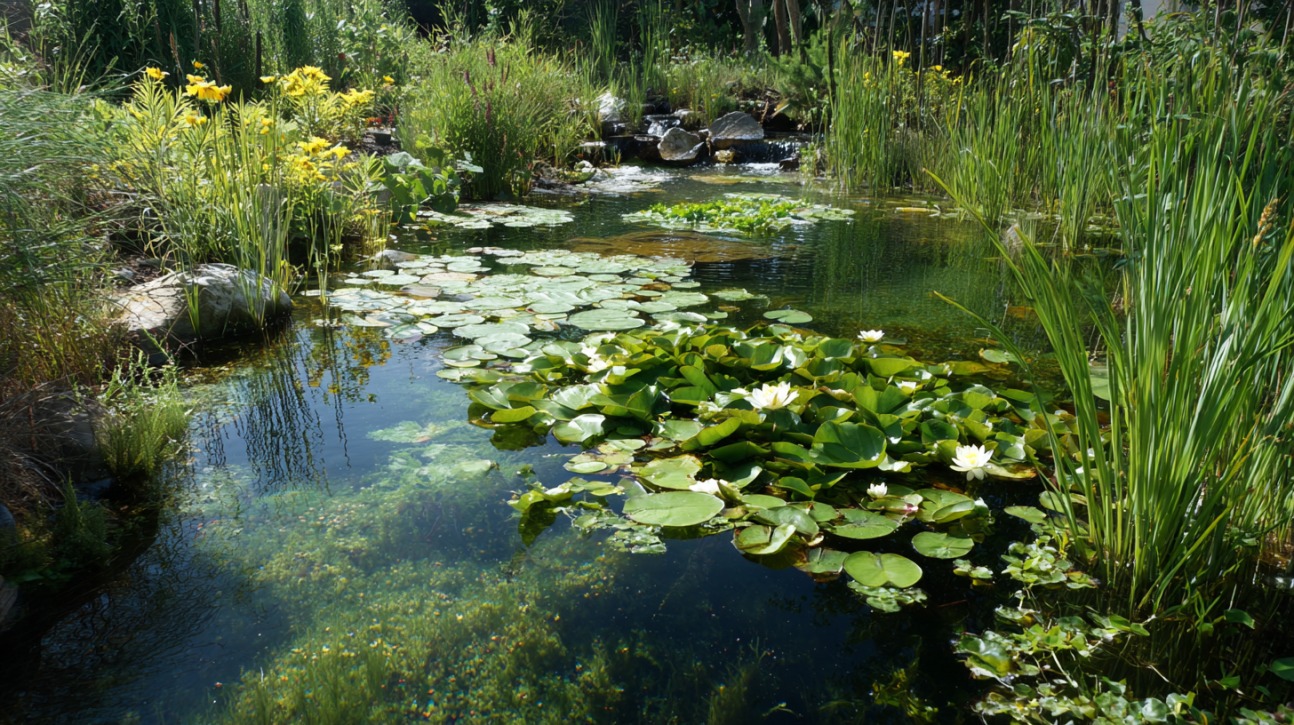Healthy ponds depend heavily on proper aeration. A lack of oxygen circulation quickly leads to stagnation, foul odors, algae blooms, and fish kills.
Many pond owners underestimate the role of oxygenation until problems become visible, often resulting in costly cleanups or restocking.
Aeration prevents these issues by maintaining a balanced ecosystem where aquatic life thrives, water clarity improves, and organic material breaks down more efficiently.
Several technologies exist to fit different pond sizes, depths, and purposes, each offering distinct benefits.
Choosing the right system requires considering depth, purpose, and available power sources.
Types of Aeration Systems
First, let us touch upon the different types of aeration systems.
Bottom-Diffused (Submersed) Aeration
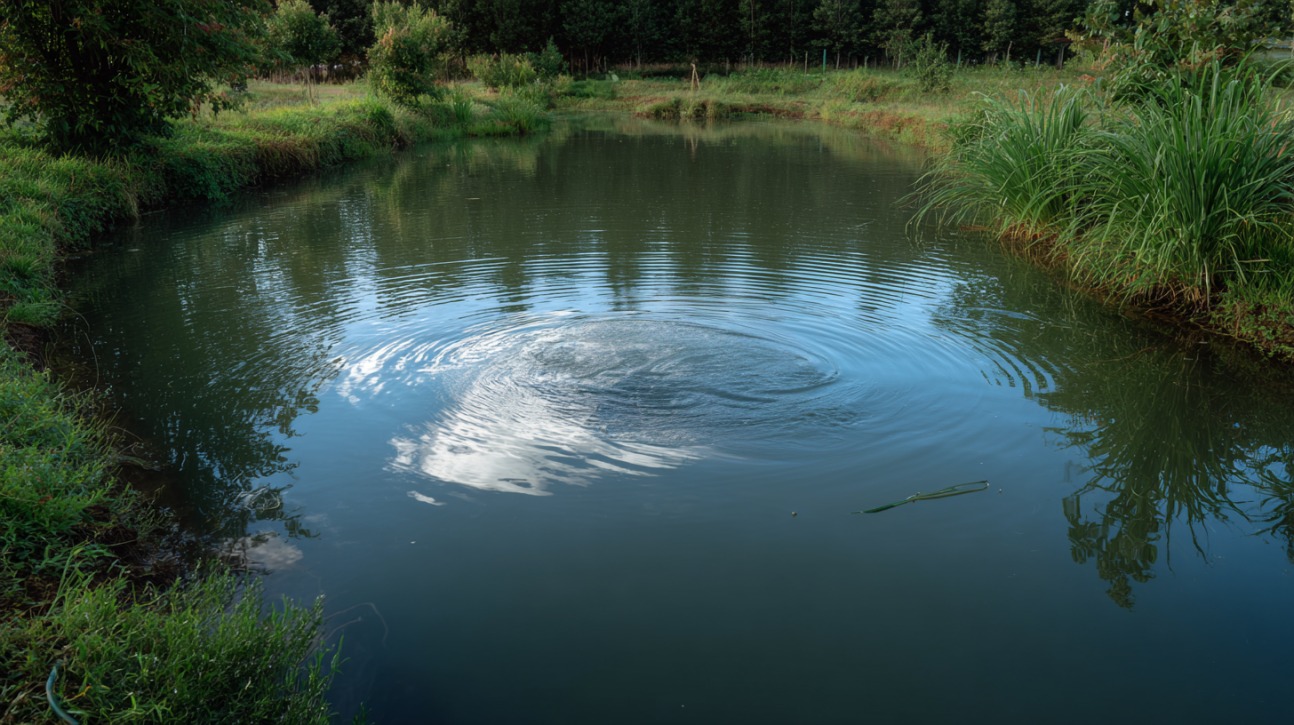
For ponds between six and fifty feet deep, bottom-diffused aeration proves highly effective. Compressors pump air through tubing into diffuser plates placed at the pond’s floor.
Rising bubbles pull water upward, creating complete vertical circulation. Stratification layers are eliminated, resulting in consistent oxygen throughout.
Reduced muck and organic buildup occur as bacteria become more efficient in breaking down material.
Energy requirements remain relatively low, although installation needs access to electricity or alternative setups for remote areas.
- Best for: Deep ponds (6–50 feet)
- Benefits: Vertical circulation, muck reduction, elimination of stratification
- Limitations: Requires power supply nearby or remote power installation
Surface Aerators
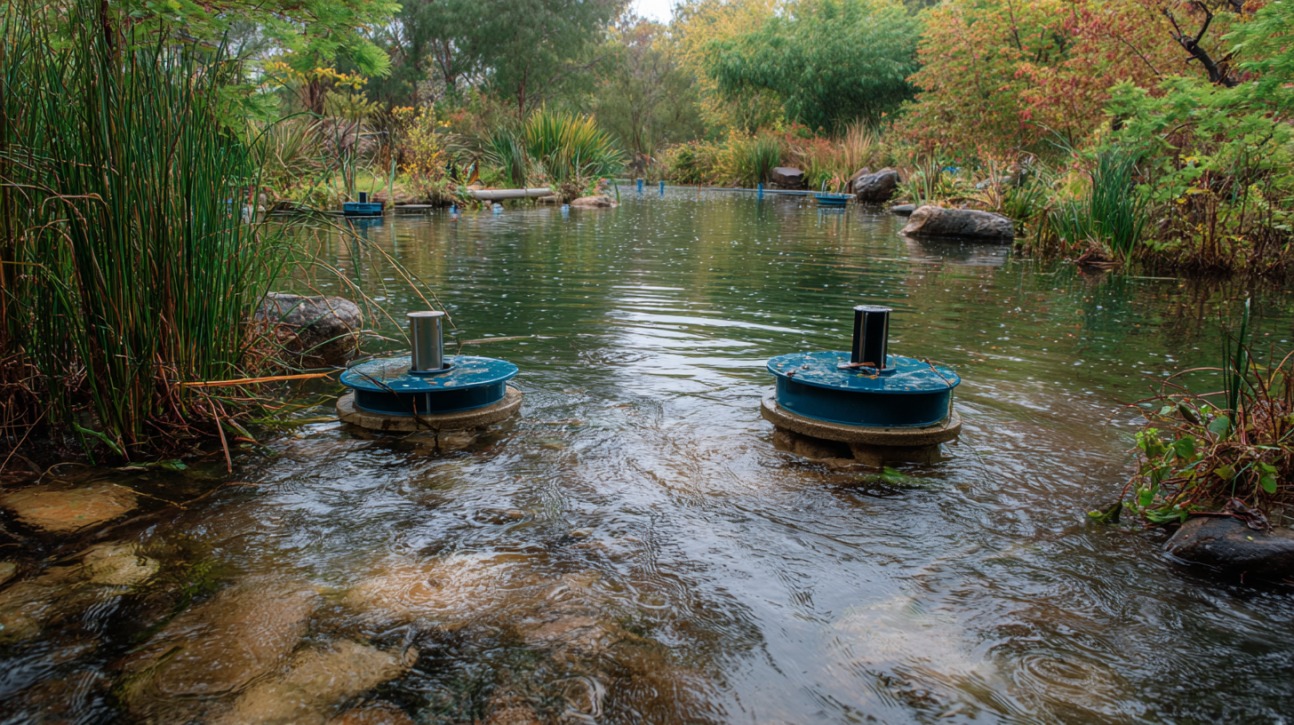
Shallow ponds under six feet with high oxygen demands benefit most from surface aerators.
Propellers churn the top layer of water, injecting oxygen rapidly into the system.
Aquaculture and fish production facilities rely on this method because it supports dense populations of fish requiring constant oxygen replenishment.
While extremely effective at raising dissolved oxygen quickly, the limitation comes in its inability to circulate water at greater depths. Additionally, surface aerators consume more energy compared to bottom-diffused systems.
- Best for: Shallow ponds (<6 feet)
- Benefits: Rapid oxygen transfer, supports aquaculture operations
- Limitations: High energy use, no circulation at depth
Floating Fountains
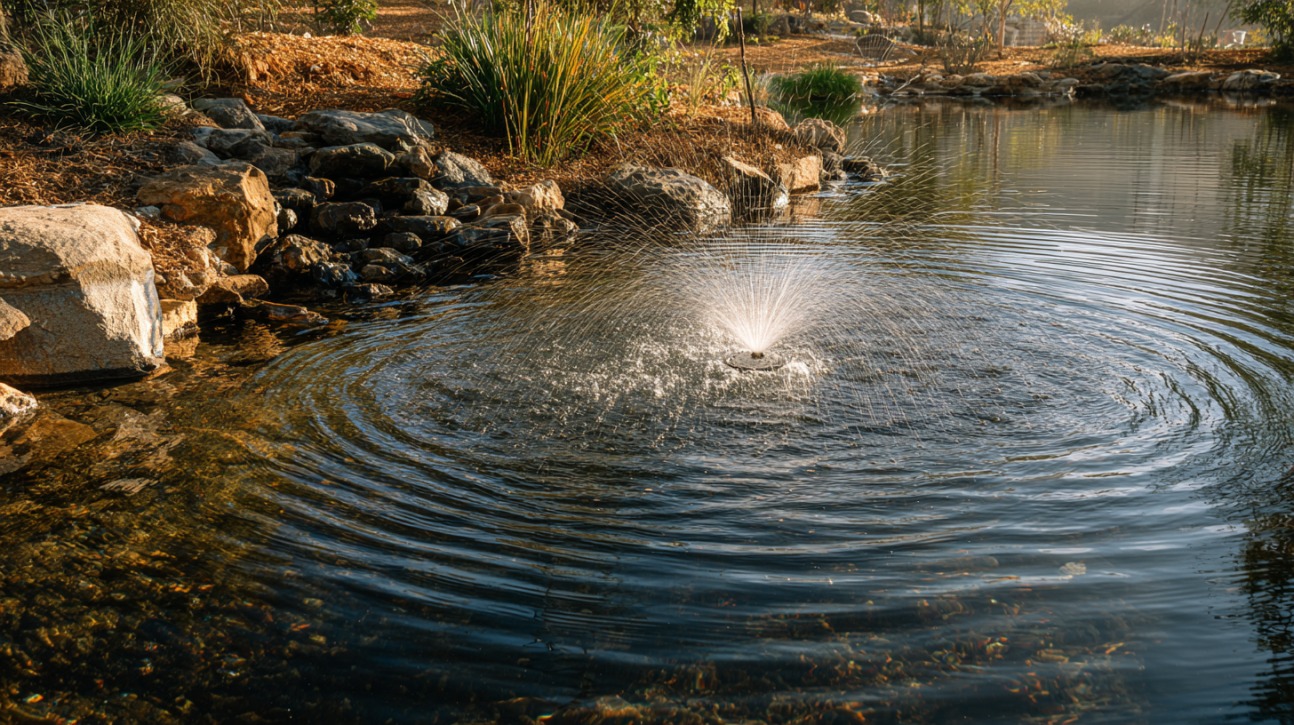
When aesthetic enhancement is as important as oxygenation, floating fountains offer an attractive option.
Water is drawn from near the surface and sprayed upward, creating appealing patterns often paired with lighting for nighttime visibility.
Oxygen exchange happens during the spray, providing moderate aeration. These systems are well-suited for shallow to moderately deep ponds, particularly in residential or recreational areas.
They also deter mosquito breeding through constant surface movement. However, circulation effectiveness is limited to depths less than six feet.
- Best for: Shallow to moderate ponds with aesthetic focus
- Benefits: Spray patterns, lighting, moderate oxygenation, mosquito control
- Limitations: Ineffective below 6 feet
Solar-Powered Aerators
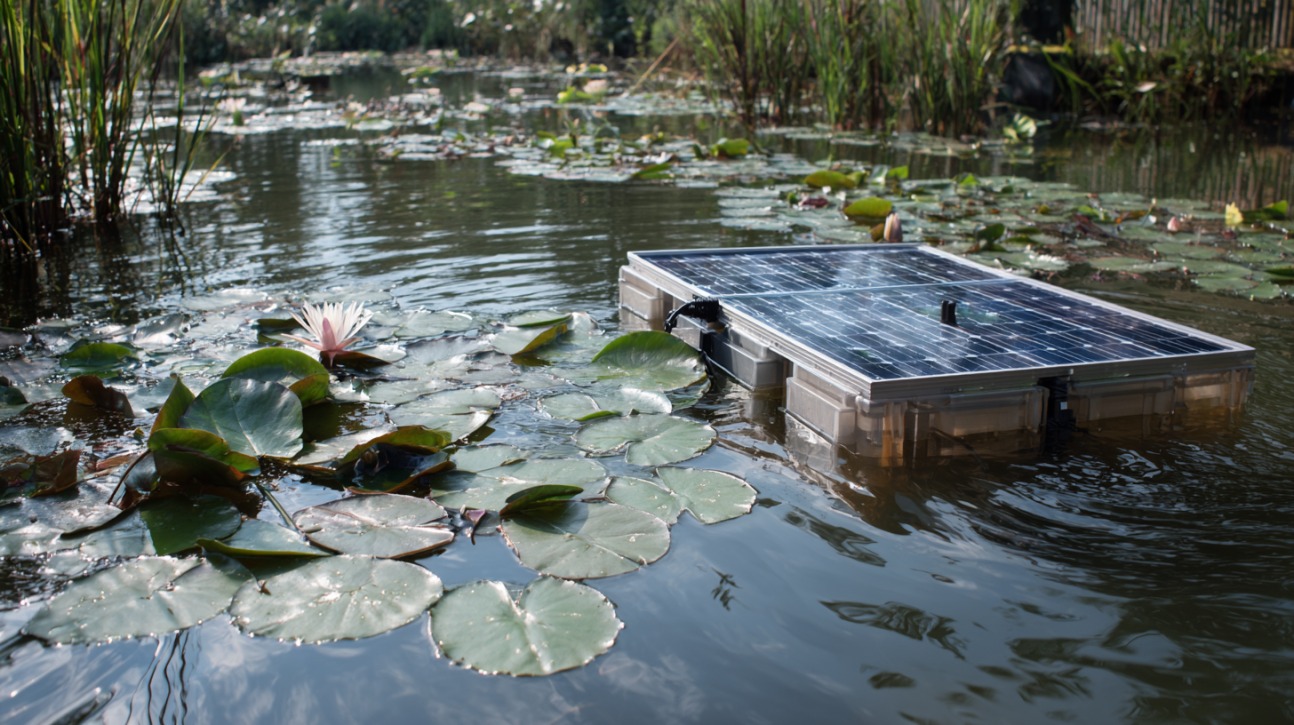
Off-grid ponds up to twenty feet deep benefit greatly from solar-powered aeration.
Two main options exist: direct drive systems, which only operate during daylight, and battery backup models, which provide twenty-four-hour coverage.
Eco-conscious pond owners prefer solar for its renewable operation and zero utility costs.
While environmentally responsible, these aerators carry a higher upfront price and rely on favorable weather conditions to operate consistently.
- Best for: Remote ponds with no utility access
- Benefits: Eco-friendly, no ongoing utility costs
- Limitations: Dependent on sunlight, high installation expense
Windmill Aeration
Remote ponds with no access to electricity or solar backup can employ windmill aeration.
Wind-driven compressors push air through lines into diffusers, offering circulation at no energy cost.
While attractive for supplemental oxygen, reliance on wind prevents it from being a consistent primary source.
Still, when combined with another system, windmills extend aeration coverage and provide a cost-effective boost.
- Best for: Supplementary aeration in remote ponds
- Benefits: Zero ongoing energy cost
- Limitations: Weather-dependent, unreliable as sole system
Circulators and Blowers
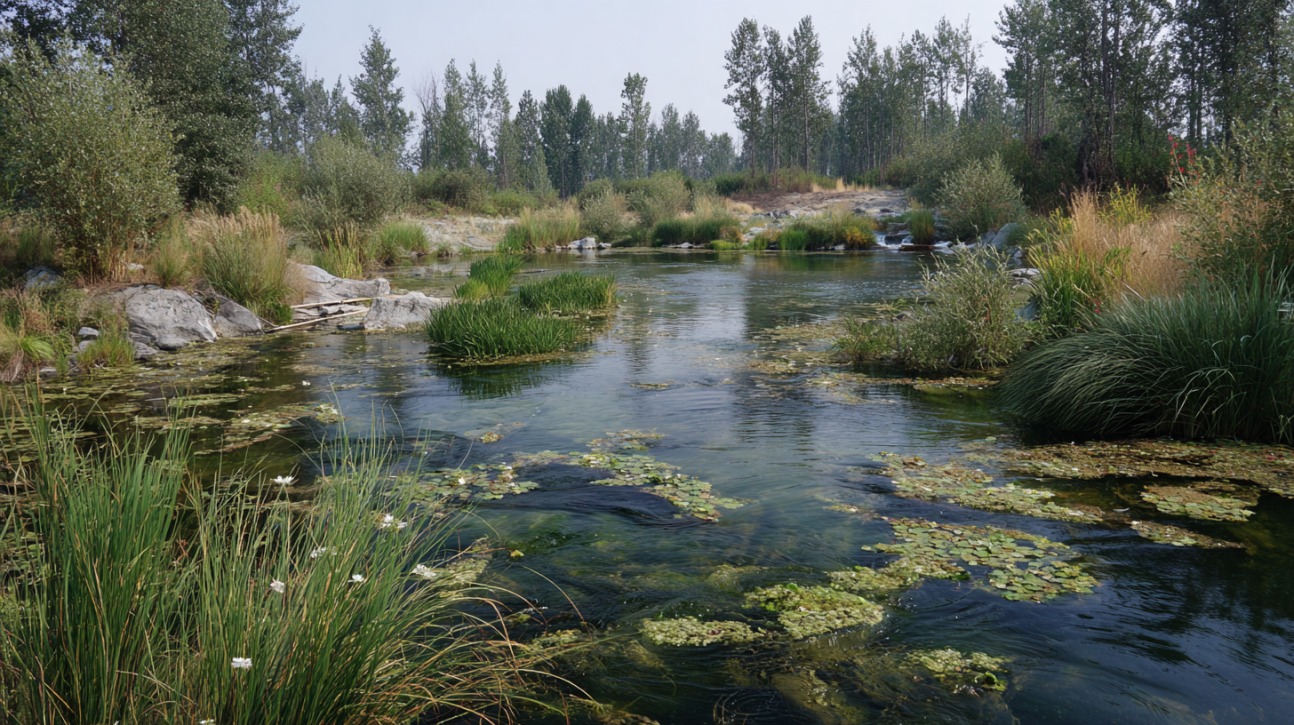
Circulators, blowers, as well as pond de-icers and aerators, are designed for water movement rather than oxygenation.
Positioned near docks or shallow areas, they prevent ice formation in cold climates and help reduce debris buildup.
Water circulation benefits pond management, but oxygen delivery remains insufficient for sustaining aquatic life.
These tools work best as supplements rather than primary aeration sources.
- Best for: Ice prevention and debris management
- Benefits: Keeps water moving, reduces surface debris
- Limitations: Not adequate for full oxygenation
Nanobubble & Oxygen Saturation Technology
View this post on Instagram
High-end ponds requiring precise oxygen control rely on nanobubble technology.
Microscopic oxygen bubbles are delivered directly into the water at a molecular level, ensuring high saturation rates without disturbing surface conditions.
Although highly advanced, such systems are not considered traditional aeration because they do not circulate water.
Expense also makes them less practical for average pond owners, but in aquaculture research or specialized operations they prove invaluable.
- Best for: Advanced oxygen control applications
- Benefits: Micro-oxygen delivery, no water movement required
- Limitations: Very expensive, not a true circulation system
Combining Aeration Systems for Optimal Results
Pond ecosystems often require hybrid aeration to achieve balance. Different zones benefit from specialized methods, such as pairing a fountain with a bottom diffuser.
Fountains improve aesthetics and surface oxygenation while diffusers maintain deep water circulation.
Aquaculture facilities often combine surface aerators with subsurface systems to meet heavy oxygen demand at all depths.
Remote ponds may adopt windmills for supplemental coverage alongside solar-powered systems for reliability. Strategic combinations address both visual goals and ecological requirements, ensuring year-round health.
Installation Considerations
Successful installation demands careful planning. Electrical access remains one of the largest factors, requiring trenching for airline tubing or conduit when power is not readily available.
Airline routing must minimize kinks and distance losses to maintain efficiency.
Placement of diffusers, aerators, or fountains should match pond shape and depth zones.
Accessibility for long-term maintenance also matters, as compressors require servicing, diffusers need cleaning, and fountains must be cleared of clogs. Planning ahead reduces costly adjustments later.
Maintenance and Monitoring
Even the best systems underperform without routine maintenance. Compressors need filter cleaning, bearings checked, and air leaks monitored.
Diffusers accumulate debris and require seasonal cleaning to maintain bubble flow.
Seasonal adjustments are essential in regions with temperature fluctuations, as oxygen demand shifts.
Warning signs such as unusual odors, fish surfacing frequently, or persistent algae blooms indicate underperformance.
Regular monitoring not only protects aquatic life but also extends equipment lifespan, reducing replacement costs.
Summary
Pond aeration delivers ecological balance, improves water clarity, and supports aquatic life.
Each system offers distinct advantages suited to different pond depths, purposes, and budgets.
Careful selection ensures long-term results, whether seeking aesthetic enhancement, aquaculture support, or remote operation.
Combining methods often provides the most reliable outcome. A thoughtful approach guarantees ponds remain visually pleasing, ecologically stable, and enjoyable for years to come.
So, the next time your friends come over for a house party, you can brag how you have a clean, beautiful pond ready for party tricks!

